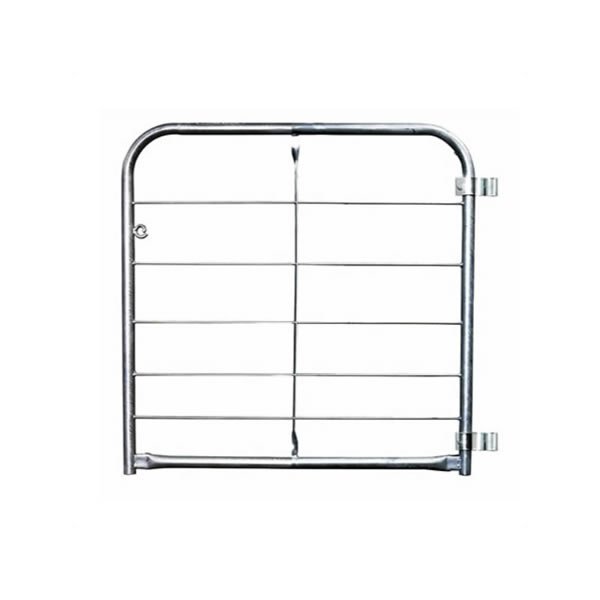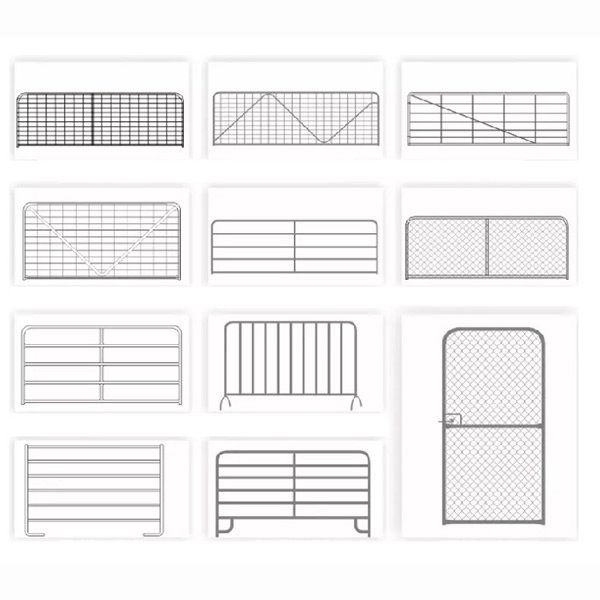Farm Fence Gate
A farm fence gate is a movable barrier or entrance structure installed within a larger agricultural fencing system. It is designed to allow controlled access to enclosed areas such as fields, pastures, or farmsteads. These gates are an integral part of farm infrastructure and play a crucial role in managing various aspects of agricultural operations.
| Application | Access control for for machinery and vehicles, controlling livestock movement, security and safety, boundary marking, aesthetic purposes, wildlife conservation |
|---|---|
| Finishing | Zinc coating |
| Height | 1800mm |
| Length | 1800mm to 4200mm |
Product Details
A farm fence gate is a movable barrier or entrance structure installed within a larger agricultural fencing system. It is designed to allow controlled access to enclosed areas such as fields, pastures, or farmsteads. These gates are an integral part of farm infrastructure and play a crucial role in managing various aspects of agricultural operations.
Here are some key features and components commonly associated with farm fence gates:
- Materials: Farm fence gates are constructed from durable materials such as metal (including steel or aluminum), or a combination of materials. The choice of material depends on factors such as cost, durability, and the specific requirements of the farm.
- Designs: Gates come in various designs, ranging from simple and functional to more decorative styles. The design may be influenced by the intended function of the gate, as well as aesthetic considerations.
- Size and Width: The size and width of farm gates vary based on the purpose for which they are installed. Some gates are wide enough to accommodate large farm machinery, while others are narrower for pedestrian or livestock access.
- Latch and Hinge Mechanisms: Farm gates typically feature latch and hinge mechanisms to secure the gate in the closed position. These can range from simple latches to more advanced locking systems, depending on the security requirements of the farm.
- Height: The height of the gate is determined by the type of livestock or animals being managed. For example, gates used for cattle may need to be taller than those used for sheep and goats.
- Swing Direction: Farm gates can swing open in different directions, including inward or outward. The choice of swing direction depends on factors such as the terrain, available space, and the desired flow of traffic.
- Durability and Weather Resistance: Farm fence gates need to withstand outdoor elements, including weather conditions such as rain, snow, and sunlight. Therefore, they are often treated or constructed with materials that provide resistance to corrosion and decay.
- Access Control: Gates may incorporate features for controlled access, such as locks or key systems, to ensure that only authorized individuals can open and close the gate.




